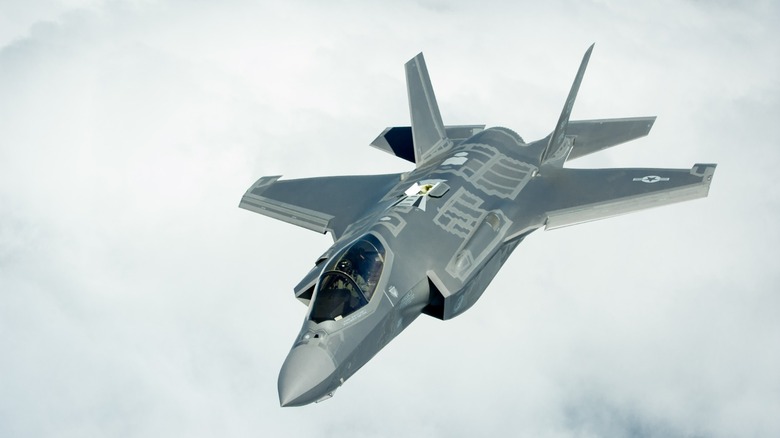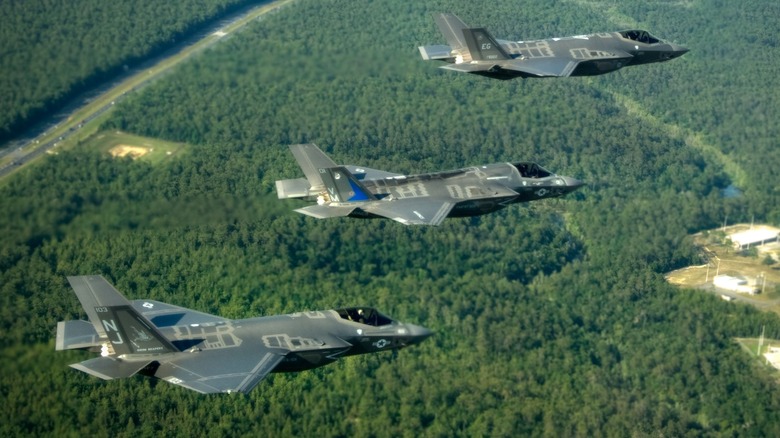Can An F-35 Fly Without A Pilot?
There's no denying that the F-35 Lightning II is the most advanced fighter jet in the world, thanks to its many impressive capabilities. A fifth-generation fighter built in the United States and exported to several countries, the F-35 is incredibly fast and features state-of-the-art stealth technology. It's also a crewed aircraft, which means that it requires a pilot sitting inside the cockpit for it to be able to fly.
Given the scope of the United States' capabilities in controlling drone aircraft remotely, it's valid to ask whether the F-35 can do the same. Technically, the capability could be included in a future variant, but as of mid-2025, the F-35 cannot fly without a pilot. It hasn't been designed to do so, at least, although one did manage to continue flying for 11 minutes after its pilot ejected in 2023. It flew around 70 miles before the $100 million aircraft crashed into a forest.
While the F-35 continued to function for more than ten minutes, it merely followed its heading using its automatic flight control system. Thus, a pilot would need to remain inside the cockpit to keep the F-35 in the air. While there's currently no autonomous or semi-autonomous control of the F-35, the U.S. Air Force is likely interested in adding that capability. Doing so would align with the Next-Generation Air Dominance (NGAD) program, which will utilize a family of sixth-generation aircraft accompanied by swarms of uncrewed aerial vehicles (UAVs) as part of the Collective Combat Aircraft (CCA) program.
When might an autonomous F-35 take to the skies?
Lockheed Martin, which developed and produces all current versions of the F-35 Lightning II, revealed in May 2025 that an uncrewed option could arrive within two to three years. This is because Lockheed has developed several autonomous capabilities in line with the NGAD and CCA programs, which the defense contractor can potentially integrate into an F-35. Granted, it will take some modifications, but ideally, within a few years, the U.S. military and its allies can fly their F-35s with or without pilots.
Lockheed CEO Jim Taiclet spoke at Bernstein's Strategic Decisions Conference (via Breaking Defense), stating that "We could make the F-35 pilot optional over a relatively modest time frame based on a lot of the development we've done." Elaborating, he added that "We feel like within two to three years, we could have a meaningful increase of capability for the F-35 by porting some of these technologies over," referring to the company's NGAD and CCA tech.
Should such a variant come to fruition, it would significantly increase the potential lethality of any air force operating autonomous or semi-autonomous F-35s. By removing the pilots from the aircraft and placing them at ground control stations, the fighters could sustain greater G-forces than they would be able to do with a pilot onboard. This could make them deadlier in dogfights and would increase the fighter's capabilities far beyond its initial design, especially if a small swarm of F-35s were dispatched to provide cover for something like a strategic bomber.

